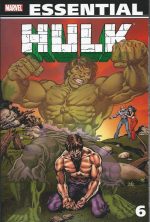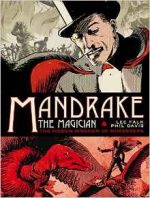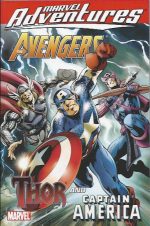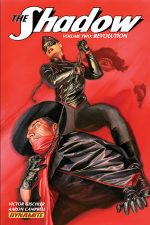
By Len Wein, Roger Stern, David Anthony Kraft, Gerry Conway, Chris Claremont, Sal Buscema, Herb Trimpe, George Tuska, Keith Pollard, Jim Starlin & various (Marvel)
ISBN: 978-1-7851-4540-0
Bruce Banner was a military scientist accidentally caught in a gamma bomb blast of his own devising. As a result, stress and other factors cause him to transform into a giant green monster of unstoppable strength and fury. He was one of Marvel’s earliest innovations and first failure but after an initially troubled few years finally found his size-700 feet and a format that worked, becoming one of the company’s premiere antiheroes and most popular features.
During the 1960s, artist Herb Trimpe had made the character his own; the Jack Kirby-based “house†art-style he initially employed quickly evolving into often startlingly abstract mannerism, augmented by an unmatched facility for drawing technology – especially honking great ordnance and vehicles – and, crucially, who could possibly deny the sheer cathartic reader-release rush of those spectacular “Hulk Smash!†moments…
However, by the time of the tales in chronologically complete monochrome mammoth (re-presenting Incredible Hulk #201-225 and Incredible Hulk King Size Annual #6, July 1976-July 1978) the artistic reins had passed to another illustrator who would become inextricably associated with the Jade Juggernaut whilst writer Len Wein continued to insert fresh ideas and characters, redefining the man-monster for the modern age…
The blockbusting battle-action starts with ‘The Sword and the Sorcerer!’ (illustrated by regular art-team Sal Buscema & Joe Staton) wherein the Hulk found himself in a perilously primitive world.
He had been miniaturised and inserted into the brain of Major Glen Talbot by former pursuers Dr. Leonard Samson and General Thaddeus Ross to restore the mind of Banner’s comatose rival for Betty Ross-Talbot‘s affections. The radical psycho-surgery was not without complications, however, and at the moment of his greatest triumph and sacrifice the Man-Monster began uncontrollably shrinking beyond the ability of Samson’s team to reach him…
He stabilised on a sub-atomic world long enough to liberate a primitive people from the domination of a brutal despot (and demon-possessed pawn) Kronak the Barbarian before starting to diminish once more. His last stop was the promised land of his beloved and long-lost alien queen Jarella…
Sadly ‘Havoc at the Heart of the Atom’ revealed how his last visit had rendered the world tectonically unstable and shattered the civilisation which once had the power to blend Banner’s mind with the Hulk’s body. Moreover the once-gentle population had turned on the queen they held responsible…
Reunited with his beloved, the simplistic brute swore to fix the problem and was soon embroiled with the antediluvian horror who first hijacked him to the Microverse and who still craved bloody revenge…
Once again evil was defeated as the ‘Assault on Psyklop!’ led to another crushing defeat for the vile insectoid and a guardedly happy ending for the man-brute as a rescue attempt from Earth brought the Hulk home, carrying the astounded Jarella with him…
Herb Trimpe returned in #204 to pencil a tale of time-bending might-have-beens as brilliant theoretician Kerwin Kronus offered to eradicate Banner’s problems by turning back time and undoing the accident which created the Hulk. Sadly, the experiment succeeded all too well: briefly forming an alternate timeline where original sidekick Rick Jones died and the time-master became an even greater menace to reality. Banner/Hulk made a heartbreaking sacrifice to close that ‘Vicious Circle’…
The evergreen artist – aided by inkers Frank Giacoia & Mike Esposito – remained to illustrate David Anthony Kraft’s ‘Beware the Beehive!’ from Incredible Hulk King Size Annual #6, wherein a band of mad scientists attempted to recreate their greatest success and failure.
Morlak, Hamilton, Shinsky and Zota were a rogue science collective known as the Enclave and from their hidden “Beehive†had spawned puissant artificial man Him (latterly Adam Warlock). Here and now, three of them reunite for another go at building a god they can control, but when they abduct Dr. Stephen Strange to replace their missing fourth, the magician summons the Jade Juggernaut to save him from the experiment’s inevitable consequences: a marauding, compassionless super-slave dubbed Paragon whose first tasks are to eradicate Strange and subdue mankind.
Happily, after a border-shattering, army-crunching global rampage, that’s when the Hulk kicks the wall in and goes to work…
‘Do Not Forsake Me!’ in Hulk #205 saw Wein, Buscema & Staton back to depict the most tragic moment in the Green Goliath’s tortured life as Jarella sacrifices herself to save a child from rampaging robbery robot Crypto-Man, leaving the bereft Hulk ‘A Man-Brute Berserk!’
His grief-stricken trail of destruction leads from Gamma Base, New Mexico all the way to New York City where even his friends and allies are unable to calm the green gargantuan, leading to a brutal battle ‘Alone Against the Defenders!’ who finally realise compassion is the only method that will work against their traumatised foe…
Hulk #208 finds ‘A Monster in Our Midst!’ as Bruce finally rejects ending his pain-wracked existence and begins a new and hopefully stress-free life where his alter ego will never be seen again. That resolve only lasts as long as it takes the maniacal Crusher Creel – freed as a consequence of the Jade Juggernaut’s most recent rampage – to accept a commission from a triumvirate of hooded schemers who want the Hulk dead…
However, even though ‘The Absorbing Man is Out for Blood!’ the super-thug is no match for Hulk’s unfettered fury, but his well-deserved defeat results in Banner collapsing unconscious in alley where he is eventually found by a mystic do-gooder in search of an ally…
With #210, Ernie Chan became new regular inker as ‘And Call the Doctor… Druid!’ sees both Banner and the Hulk crucial to a plan to stop immortal mutant Maha Yogi, his vast mercenary army and alien bodyguard Mongu before they complete their preparations for world domination…
Although the battles of ‘The Monster and the Mystic!’ are a close-run thing, virtue is eventually victorious, but that makes little difference to the Hulk’s once-companion Jim Wilson as he hitch-hikes across America, utterly unaware that he is the target of a vicious criminal conspiracy…
The plots hatch once Jim reaches New York where his hidden tormentors decide that he must be ‘Crushed by… the Constrictor!’ but neither they nor their ruthless high-tech hitman expected the Hulk to intervene…
With a friend and confidante who knows all his secrets, you’d expect Banner’s life to get a little easier, but the authorities will never stop hunting the Hulk, who initially realises ‘You Just Don’t Quarrel with the Quintronic Man!’ (inked by Tom Palmer) before bouncing back to trash the formidable five-man mecha suit.
As Chan returns this battle leads to a frenzied clash with a new hyper-powered hero determined to make his name by defeating America’s most terrifying monster in ‘The Jack of Hearts is Wild!’
Macabre old enemy the Bi-Beast is resurrected in #215; still hungry to eradicate humanity in ‘Home is Where the Hurt Is’ and close to succeeding after seizing control of SHIELD’s Helicarrier. Only desperate action by General Ross can save the day and the old soldier uses the carrier’s tech to shanghai Banner, letting nature take its course and hoping that the right monster wins the inevitable earthshaking battle before a ‘Countdown to Catastrophe!’ leaves the planet a smoking ruin…
A moodily poignant change of pace graces #217 as ‘The Circus of Lost Souls!’ sees the shell-shocked Hulk lost somewhere in Europe, defending a band of carnival freaks from the crooked depredations of the Ringmaster and his Circus of Crime: a solid demarcation as Wein moves away from scripting in favour of simple co-plotting, allowing Roger Stern to find his own big green feet to guide the Green Goliath’s future…
It all begins with ‘The Rhino Doesn’t Stop Here Anymore’ (#218 by Wein, Stern, George Tuska, Keith Pollard & Chan) as super-strong psychologist Doc Samson takes centre stage battling the ruthless Rhino whilst in #219 Banner learns ‘No Man is an Island!’ (Wein, Stern, Buscema & Chan) after hiring on as a deck hand on a freighter, only to have it sunk from under him by submarine-based pirate Cap’n Barracuda.
Washed ashore on a desert atoll, Hulk is befriended by a deluded individual who believes himself to be Robinson Crusoe, but as events unfold an even stranger truth is revealed. After Barracuda captures the madman, it is to pluck the secret of making monsters from his broken mind but the cruel corsair has completely underestimated the ferocious loyalty and compassion of the Hulk, who unleashes devastating catastrophic ‘Fury at 5000 Fathoms!’
With Stern in complete authorial control, Sal Buscema is joined by Alfredo Alcala for #221’s ‘Show Me the Way to Go Home’ as the still all-at-sea Banner is rescued from drowning by marine explorer Walt Newell who ferries his exhausted passenger back to New York where he is recognised as Bruce Banner. Realising he has unleashed the Hulk on a major population centre, Newell exposes his own secret identity as sub-sea superhero Stingray and pursues his former guest. The battle is painfully one-sided and Stingray is near death when Jim Wilson intervenes, saving the marine crusader’s life but only at the cost of Hulk’s trust…
Wein returned for one last hurrah in #222, aided and abetted by Jim Starlin & Alcala for a creepy horror yarn as the Green Goliath tears through another unfortunate army unit before being gassed into unconsciousness. Banner awakens in the care of two children living in a cave, but they’re not surprised by the fugitive’s transformations: not since the radioactive stuff changed their little brother.
Of course now people have started disappearing and although they haven’t grasped the truth of it yet, Bruce instantly grasps what is involved in ‘Feeding Billy’ and what his intended role is…
Now firmly established, Stern began an ambitious storyline in Incredible Hulk #223 as ‘The Curing of Dr. Banner!’ (illustrated by Sal Buscema & Josef Rubinstein) saw the monster’s human half spontaneously purged of the gamma radiation that triggered the changes.
Heading for Gamma Base to verify his findings, Bruce discovers the entire facility has been taken over: mind-controlled by his ultimate archenemy…
As the crowing villain makes everyone ‘Follow the Leader!’, Doc Samson and General Ross escape and beg Banner to again sacrifice his humanity for the sake of mankind. Only the Hulk has ever defeated the Leader and their only hope is to recall and harness the beast’s unstoppable fury. Tragically, the halfway measures fail at the final moment and the villain has cause to ask ‘Is There Hulk after Death?’
With Banner seemingly deceased, his compatriots tried to jump start his system with another overwhelming dose of gamma rays and soon have cause to regret the resurrection of the original Gamma Goliath…
To Be Continued…
This catastrophically cathartic tome also includes pages taken from the Marvel Universe Handbook giving the lowdown on Jarella and the Constrictor plus an alternative cover to Hulk #206.
The Incredible Hulk is one of the most well-known comic characters on Earth, and these stories, as much as the movies, cartoons, TV shows, games, toys and action figures are the reason why. For an uncomplicated, earnestly vicarious experience of Might actually being Right, you can’t do better than these exciting episodes, so why not Go Green – even if it’s only in monochrome and in your own delirious head?
1976, 1977, 1978, 2010 Marvel Characters, Inc. All rights reserved.










